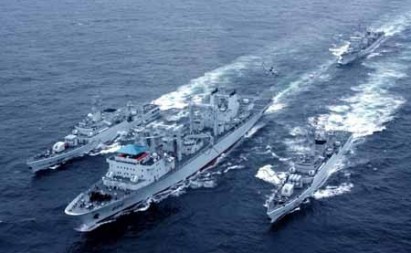(BGF) – As the Philippines’ InterAskon News reported, China has transferred two destroyers, with one each to operate in the East and South China Seas and nine other ex-navy vessels, including tugs, icebreakers and survey ships to its maritime surveillance fleet in a move to strengthen up its position in bitter territorial rows with Japan and other neighbours.
Beijing has been sending maritime patrol vessels into waters around the East China Sea islands – which it claims as the Diaoyu and which Japan controls and calls the Senkaku.
Click here to read the full story or visit the InterAskon website.
China sends destroyers to boost ‘surveillance’ ops in South China Sea
 Chinese navy vessels. (Photo Credit: Agence France-Presse)
Chinese navy vessels. (Photo Credit: Agence France-Presse)
BEIJING – China has transferred two destroyers and nine other ex-navy vessels to its maritime surveillance fleet, reports said Monday, as it moves to beef up its position in bitter territorial rows with Japan and other neighbours.
Beijing renovated the ships and transferred them to surveillance operations to “alleviate the insufficiency of vessels used to protect maritime interests”, said a report on Tencent, one of China’s major news portals.
China is embroiled in a maritime dispute with Japan that has seen tensions between the two Asian giants, the world’s second- and third-largest economies, at times reach fever pitch.
It is also engaged in a simmering row with its southern neighbours over its claim to vast swathes of the South China Sea.
Beijing has been sending maritime patrol vessels into waters around the East China Sea islands – which it claims as the Diaoyu and which Japan controls and calls the Senkaku – since Tokyo nationalised the chain in September.
China is apparently seeking to prove it can come and go in the area at will and on Monday three of Beijing’s ships were spotted in the waters around the islands, according to Japan’s coastguard, in the latest perceived incursion.
Click here to continue reading.